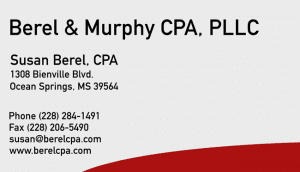Several end-of-year tax planning strategies are available to business owners to reduce their tax liability. Let’s take a look:
Deferring Income
Businesses using the cash method of accounting can defer income into 2022 by delaying end-of-year invoices so that payment is not received until 2023. Businesses using the accrual method can defer income by postponing the delivery of goods or services until January 2022.
Purchase New Business Equipment
Bonus Depreciation. Businesses are allowed to immediately deduct 100% of the cost of eligible property such as machinery and equipment that is placed in service after September 27, 2017, and before January 1, 2023, after which it will be phased downward over a four-year period: 80% in 2023, 60% in 2024, 40% in 2025, and 20% in 2026.
The first-year 100% bonus depreciation deduction is available for qualifying assets even if they are placed in service for only a few days in 2021.
Section 179 Expensing. Businesses should take advantage of Section 179 expensing this year whenever possible. In 2021, businesses can elect to expense (deduct immediately) the entire cost of most new equipment up to a maximum of $1.05 million of the first $2.62 million of property placed in service by December 31, 2021. Keep in mind that the Section 179 deduction cannot exceed net taxable business income. The deduction is phased out dollar for dollar on amounts exceeding the $2.62 million thresholds and eliminated above amounts exceeding $3.67 million.
Computer or peripheral equipment placed in service after December 31, 2017, are not included in listed property.
Qualified Property. Qualified property is defined as property that you placed in service during the tax year and used predominantly (more than 50 percent) in your trade or business. Property placed in service and then disposed of in that same tax year does not qualify.


